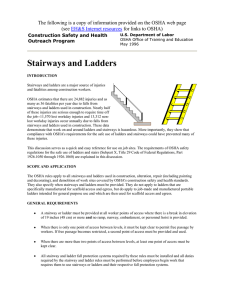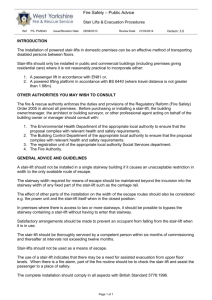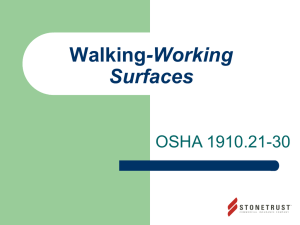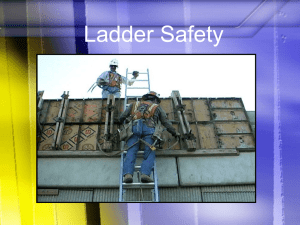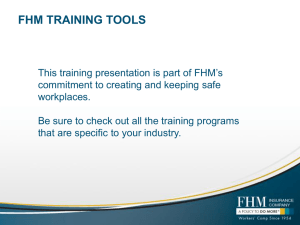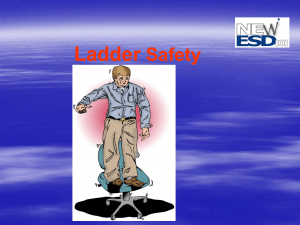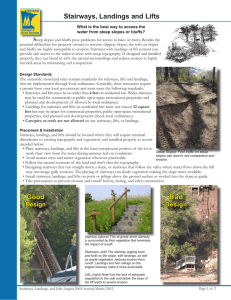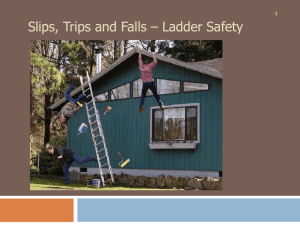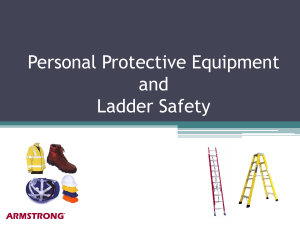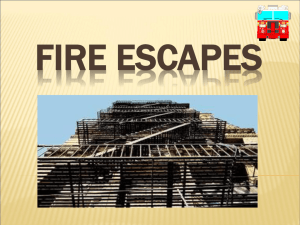Ladders and Stairways
advertisement
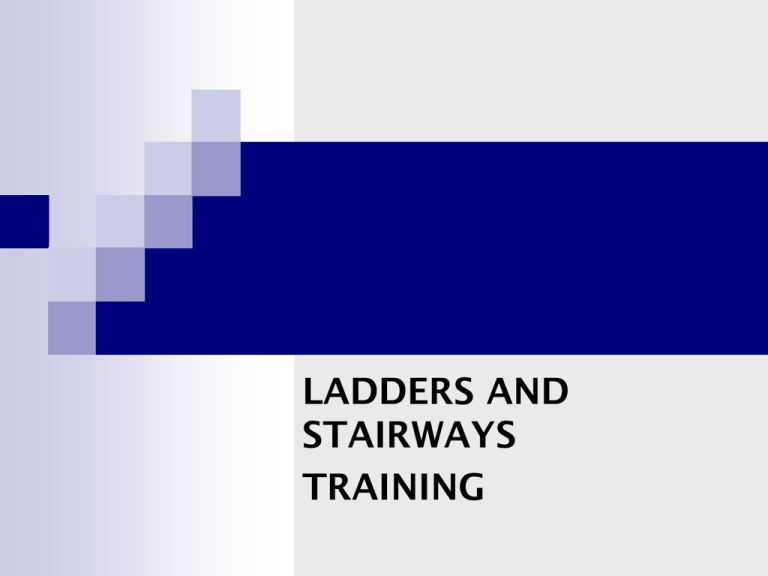
LADDERS AND STAIRWAYS TRAINING Training A competent person must train each employee in the following areas, as applicable: The nature of fall hazards in the work area The correct procedures for erecting, maintaining, and disassembling the fall protection systems to be used The proper construction, use, placement, and care in handling of all stairways and ladders The maximum intended load-carrying capacities of ladders Stairway or Ladder There must be a stairway or ladder at points of access where there is an elevation break of 19 inches or more. At least one point of access must be kept clear. Break in elevation 19 inches Stairway Construction RISER-The part of the stairs that will help you accomplish the height THREADS-The length of plate STRINGER-The part of the stairs that will hold all the weight Platforms and Swing Doors Where doors or gates open directly on a stairway, provide a platform that extends at least 20 inches beyond the swing of the door. Stairway Landings Stairways landings must be at least 30 inches deep and 22 inches wide at every 12 feet or less of vertical rise Unprotected sides of landings must have standard 42 inch guardrail systems Landing Stairways Uniform riser height and tread depth Variations not over 1/4 inch for any stairway Key Components for Stairway Safety Treads Rails Handrails Stair rails Guardrails Landings and Platforms Stairway-Components Stairway Handrails & Guardrails Stair rails at least 36” from tread to top of rail Midrails, screens, mesh, etc provided between top rail and the stairway steps If screens/mesh is used, it must enclose entire opening Handrail and Top Rail Strength Rails must be able to withstand a force of 200 pounds Handrails Stairways with four or more risers, or higher than 30 inches, must be equipped with at least one handrail. The stairway to this platform has more than 4 risers and is not guarded. The platform requires guarding. Safety in Housekeeping Instructions and Communications One way communication Two way communication IS THIS SAFE ?? IS THIS SAFE ??? Fall Protection 809 fatal falls in 2006 Fatal falls rise 15 percent Falls from ladders and roofs still account for the majority of falls Fall protection must be provided when working over dangerous equipment and machinery Injuries and Fatalities 24,882 injuries, nearly half (11,570) are lost workday injuries Ladders-Accident Near Energized Electrical Equipment If using ladders where the employee or the ladder could contact exposed energized electrical equipment, they must have nonconductive siderails such as wood or fiberglass. This is an unsafe condition Accident Carpentry Laborer Broke His Arm When He Fell from a Ladder on a Construction Site Receives $150,000 Settlement Plaintiff was working for a subcontractor hired to do framing work, the framers had just completed installing the plywood on the second floor and were accessing the second floor by way of an A-frame ladder . As framer stepped from the second floor to the first step of the ladder, the ladder tipped over and he fell hard to the concrete floor below and suffered a broken arm injury. The company breached their duty to manage safety on the work site by having subcontractors access second floors via a-frame ladders instead of straight ladders, and failing to have ladder way openings on the second floors.. Is this safe ???
